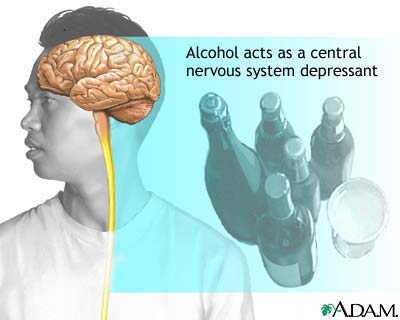Alcohol problems are very common
Alcohol is the primary drug of abuse by clients in most treatment settings, so you will see many alcoholics no matter what kind of work you do. About one in 10 Americans currently has an alcohol problem. Alcoholism generally develops slowly over a person’s lifetime. Alcoholism is not caused by psychological problems; it is a primary disease. It can begin at any age, and it often occurs in individuals who have little psychosocial pathology (Vaillant, 2003).
More than 18 million patients currently need alcohol treatment, and only one-fourth ever get treatment- for a number of reasons, such as lack of availability, lack of space, limited funding, or because drinkers may not want to admit they need treatment. In 1997, 87% of patients in treatment were in outpatient treatment, 11% were in 24-hour rehabilitation, and 2% were in 24-hour detoxification units. More than two-thirds of the funding for alcohol and drug treatment facilities come from public sources. Private insurance pays for about 14% of services, and the patients pay for about 10%. There is no excuse for not being able to find an inpatient or outpatient program of recovery. Addiction professionals are getting creative as the needs for treatment increase. A new Internet program offers excellent outpatient treatment and aftercare at home through the use of a computer. Thus, even if the patient lives in a part of the world where there is no treatment or aftercare, good treatment is still available.
Alcoholics Anonymous meetings are available online (Stein, 2001; U.S. Substance Abuse and Mental Health Services Administration, Office of Applied Studies, 1999).
Alcohol problems can destroy families
Alcohol problems cluster in and destroy families. More than half of current drinkers have a family history of alcoholism. Three of 10 adults report that drinking has been a cause of trouble in their family. Alcohol abuse can destroy families in many ways. More than 40% of separated or divorced women were married to or lived with a problem drinker. More than three-fourths of female victims of nonfatal domestic violence reported that their assailant had been drinking or using drugs. More than 18 million alcohol abusers need treatment but few get it (Stein, 2001).
 Children of alcoholics demonstrate a three- to four-times increased risk of developing the disorder. Twin studies strongly suggest a powerful genetic link. Generally, it seems that alcoholism is caused by 40% genetic factors and the remaining 60% by factors we don’t understand (Anthenelli & Schuckit, 1998; Heath et al., 1997; Schuckit, 1987). Genetic researchers are engaged in identifying the genes that cause vulnerability to addiction, but the task is difficult because alcoholism is considered to be a polygenetic disorder that is related to many different genes, each of which contributes only a portion of the vulnerability (Gordis, 2003).
Children of alcoholics demonstrate a three- to four-times increased risk of developing the disorder. Twin studies strongly suggest a powerful genetic link. Generally, it seems that alcoholism is caused by 40% genetic factors and the remaining 60% by factors we don’t understand (Anthenelli & Schuckit, 1998; Heath et al., 1997; Schuckit, 1987). Genetic researchers are engaged in identifying the genes that cause vulnerability to addiction, but the task is difficult because alcoholism is considered to be a polygenetic disorder that is related to many different genes, each of which contributes only a portion of the vulnerability (Gordis, 2003).
###
Robert R. Perkinson, PHD
Helping Your Clients Find the Road to Recovery
Alcoholism - Treatment. I. Title.
RC565.P375 - 2004
616.86’10651- dc22